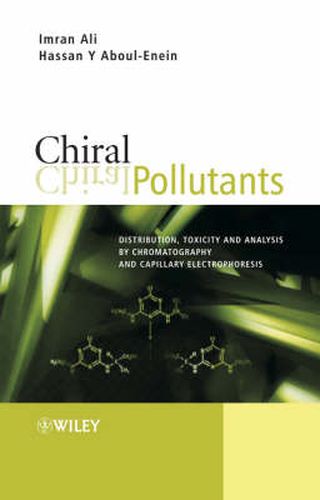Readings Newsletter
Become a Readings Member to make your shopping experience even easier.
Sign in or sign up for free!
You’re not far away from qualifying for FREE standard shipping within Australia
You’ve qualified for FREE standard shipping within Australia
The cart is loading…






The chiral analysis of environmental pollutants is a fairly recent development and attracts scientists needing to investigate the toxicity of enantiomers. For example, approximately 25 per cent of agrochemicals are chiral in nature, including pesticides that are applied as their racemates in agricultural and forestry activities. To predict the exact toxicity of pollutants the determination of the concentration of both enantiomers in environmental matrices is essential. Various approaches to chiral resolution have been developed for the analysis of pharmaceuticals and drugs but this is the first text to present detailed metholodology on the chiral separation of pollutants. This book is divided into 10 chapters: the first is an introduction to the principles of chirality; Chapters 2 to 9 discuss the sources, distribution, biotransformation, toxicity, sample preparation and chiral resolution of environmental pollutants by chromatography and capillary electrophoresis. In addition, the optimization of experimental parameters for chromatographic and capillary electrophoretic techniques is presented, making this book a useful ‘how to’ guide to chiral pollutants analysis. Coverage of the t
$9.00 standard shipping within Australia
FREE standard shipping within Australia for orders over $100.00
Express & International shipping calculated at checkout
The chiral analysis of environmental pollutants is a fairly recent development and attracts scientists needing to investigate the toxicity of enantiomers. For example, approximately 25 per cent of agrochemicals are chiral in nature, including pesticides that are applied as their racemates in agricultural and forestry activities. To predict the exact toxicity of pollutants the determination of the concentration of both enantiomers in environmental matrices is essential. Various approaches to chiral resolution have been developed for the analysis of pharmaceuticals and drugs but this is the first text to present detailed metholodology on the chiral separation of pollutants. This book is divided into 10 chapters: the first is an introduction to the principles of chirality; Chapters 2 to 9 discuss the sources, distribution, biotransformation, toxicity, sample preparation and chiral resolution of environmental pollutants by chromatography and capillary electrophoresis. In addition, the optimization of experimental parameters for chromatographic and capillary electrophoretic techniques is presented, making this book a useful ‘how to’ guide to chiral pollutants analysis. Coverage of the t